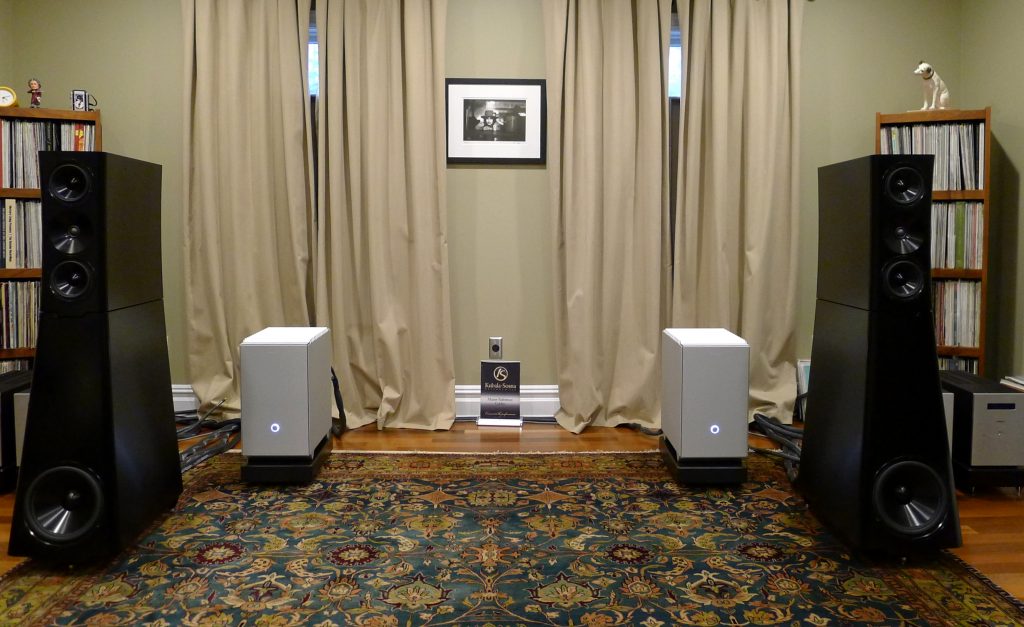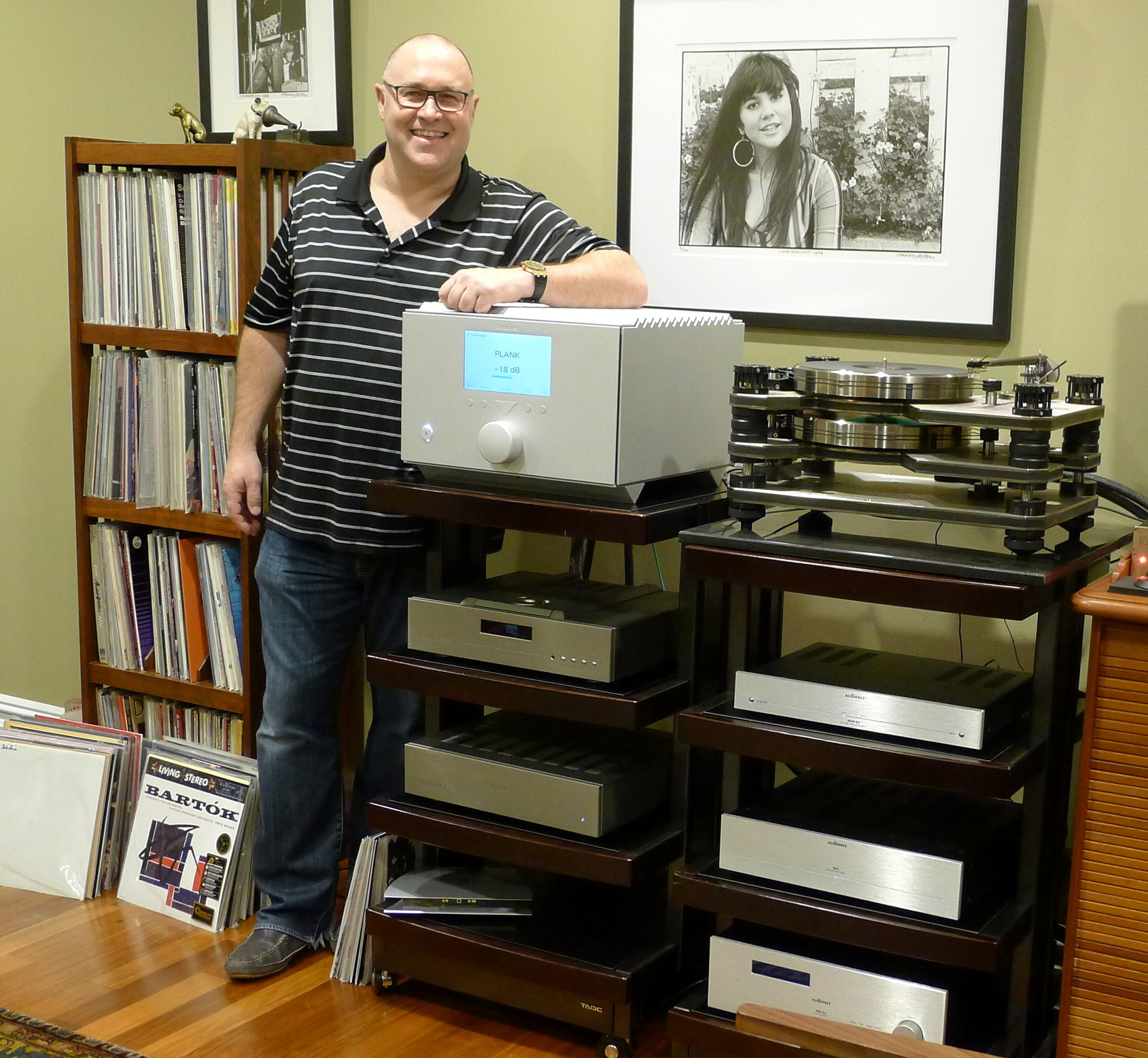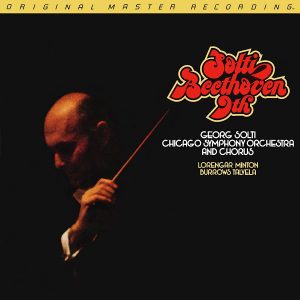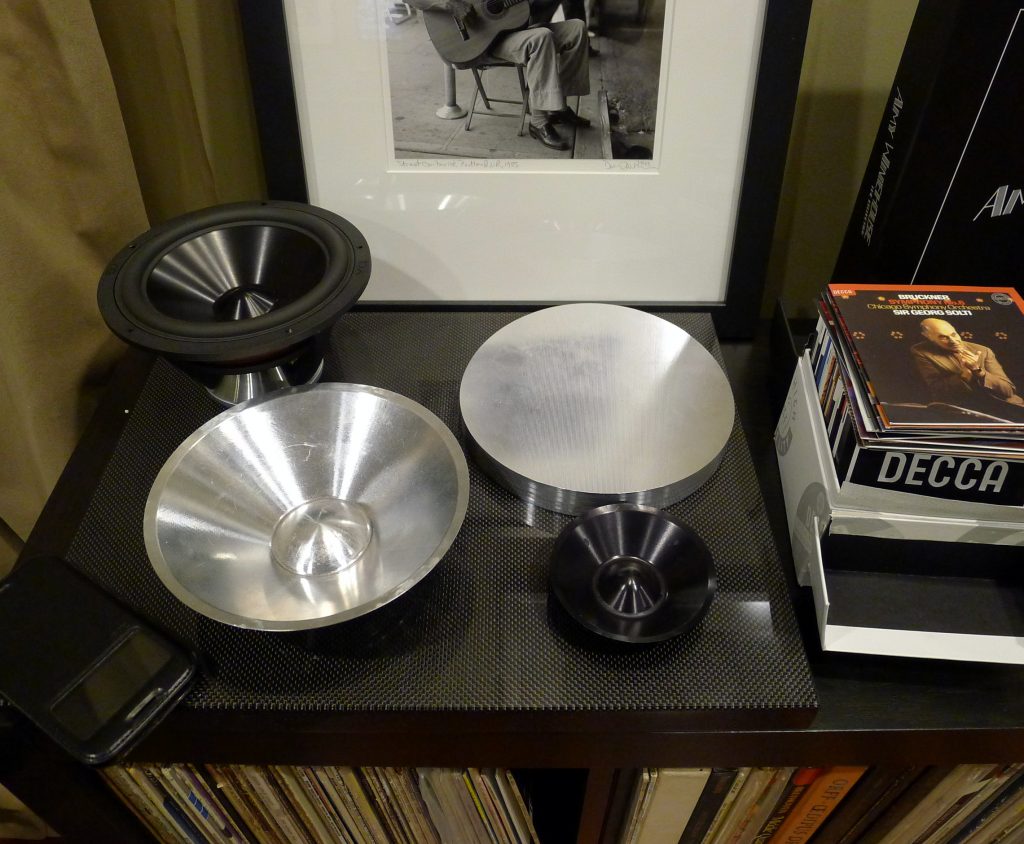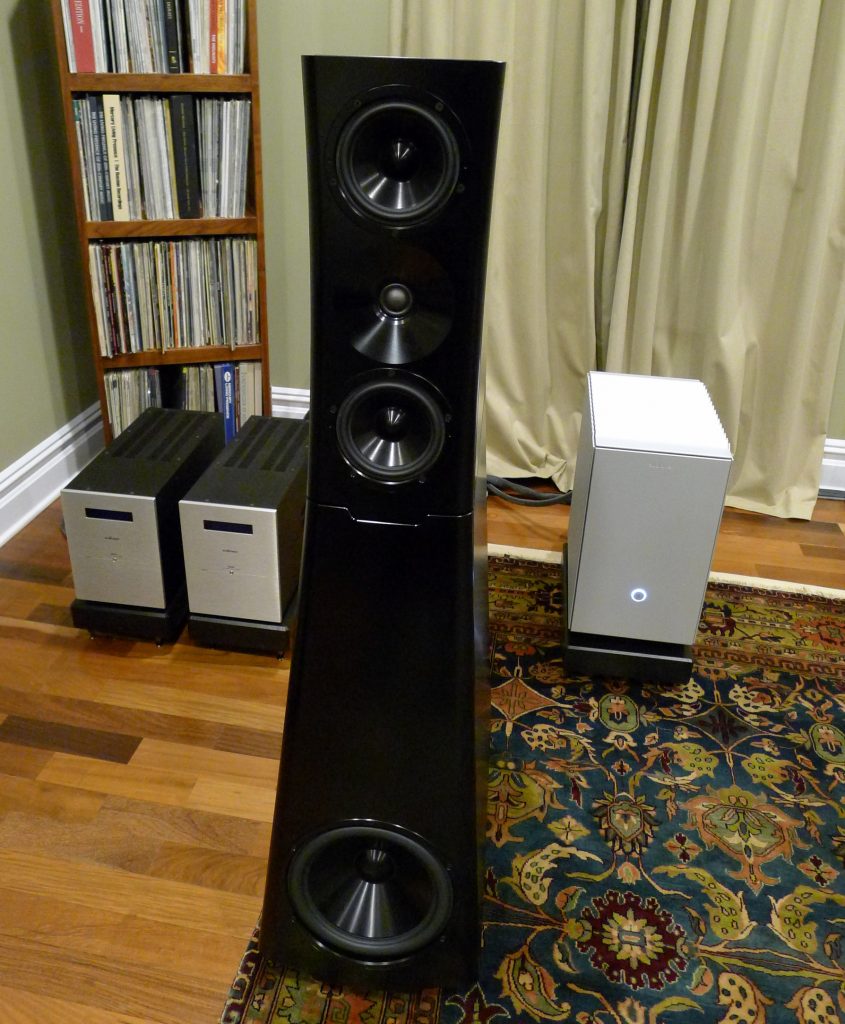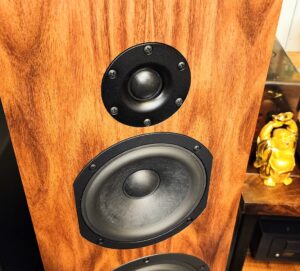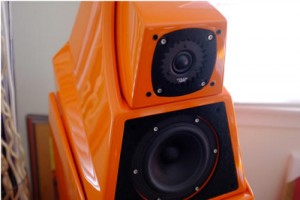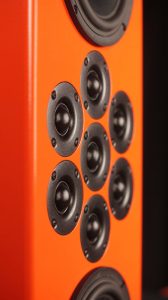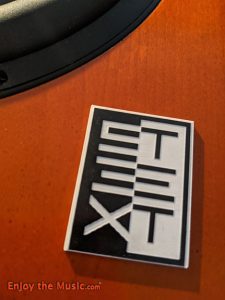Last weekend Lynn and I attended the launch of the YG Acoustics Sonja Series 2 Loudspeaker. The event followed the format of recent product unveilings hosted by GTT Audio in New Jersey. Each press attendee was invited to a personal listening session with Bill Parish and Dick Diamond, the YG Director of Sales & Marketing, in attendance.
Dick Diamond, Lynn and I with the Sonja 2
It isn't often that YG releases a new model. The Series 2 designates the incorporation of two technologies originally rolled out with the flagship Sonja XV speakers: the BilletDome™ tweeter and the ViseCoil™ inductor in the bass crossover.
BilletDome™
The brand new, patent-pending BilletDome™ tweeter is YG Acoustics™' most complex mechanical invention to date: a resonance-free soft dome is supported by a stiff, light airframe machined from aluminum billet... Finally, a tweeter that ends the age-old debate of hard dome versus soft dome by combining the best of both.
ViseCoil™
ViseCoil™ inductors are CNC-wound in-house, then encased in a vise-like milled structure to eliminate vibration and tighten tolerances... The result is better control over the woofers, far greater bass impact, and an easier job for most amplifiers.
The Installation
Similar to last year's Sonja XV launch, GTT Audio hosted the event. A lot of the same ancillary gear was used: Audionet source components including the Heisenberg amps and Stern Preamp, and the Kronos Pro LE turntable. GTT's smaller "studio" soundroom was used, rather than the "big" room, and Kubala•Sosna Elation! replaced the K•S Realization wires. The Sonja 2.2 with one bass module was on the floor.
YG has always been about hard science and verifiable results. The invitation email included links to a pair of explanatory videos. First the damaging distortions were demonstrated using lab tests. Then the YG solution was in moved in and the demo was repeated with improved results.
I watched the clips and my thoughts turned to the nature of perfectionist audio. The distortions are real. Chasing them down is extremely costly; the YG supplied fix is also not inexpensive. But just because something can be measured doesn't mean it can be heard in a domestic soundroom. Would I be able to hear a difference? If so, of what magnitude?
Listening to the Sonja 2.2
I brought along a couple of choice CDs and we cued up the Shostakovich Symphony No. 5, a splendid Reference Recordings SACD (FR-724) that will intimidate most systems.
Driven by a pair of Heisenberg monos, the Sonja 2.2 sounds unmistakably like the flagship, four-tower Sonja XV in terms of the soundstage dimensions, tone color, and a broad coherency across the frequency bandwidth. The introductory blasts of the second movement with full orchestra straining at fff opened up an encompassing soundstage that filled the front of the room. Dynamic peaks crested, occasionally reaching beyond my personal comfort level; even then, there was no breakup, no introduction of stridency. The weight and power of the low-end left me completely satisfied, although, of course it ain't the massive low-end foundation or scale of the four-tower model—it's unrealistic to expect that.
Next up, another choice LP: the MoFi reissue of Solti's Beethoven Symphony No. 9 (MFSL 2-516). When the chorus enters in the final movement, it literally populated the entire front wall leaving no gaps. This LP was so dynamic, beyond even the Shostakovich Symphony 5, it forced me to ask, "Can analog actually be more dynamic than digital? That's not supposed to happen, right?" Bill replied, "Yeah, and it also has greater density of information. The digital is slices; the analog is continuous." Then I took a second look at the analog front-end in service: Air Tight Opus cartridge; Kronos Pro LE turntable and arm; Audionet Pre G2 Phono Stage with EPX Power supply.
The Beethoven Symphony 9 highlighted just what the Sonja 2.2 inherited from the Sonja XV speakers. The original Sonja 1.2 is known to have an alluring midrange transparency. While it takes some work, it is possible to get that quality in the treble. However, it is simply unattainable in its bass. Still, two out of three is better than most.
With the Sonja 2.2 (or the XV), you have transparency everywhere. There was a quality of illumination across the frequency spectrum. Even in the largely untreated "studio" soundroom there were no obscure or ill-defined areas, no darkness.
The difference between the original Sonja 1.2 and the 2.2 can be summed up in one soundbite—100% transparency.
In more detail, the rigidity of the BilletDome tweeter results in a grand reduction of tizziness and glare. It is remarkably quiet, always controlled, and it never shouts. As Dick Diamond said to me, your first impression of the new speaker may seem a bit darker. But as soon as you play a source containing extended treble, you'll know what the tweeter can do; it simply replays what's on the source with remarkable fidelity.
The ViseCoil inductors exert the same kind of control over the woofers, tightening tolerances and eliminating vibration. YG claims linearity is improved by 60%, resulting in far greater bass impact.
The Sonja Series 2 speakers are shipping now. Prices vary, depending on configuration. The Sonja 2.2 with one bass module used for the demo is $76,800. The original Sonja 1.2 sold for $72,800. It's nice that the MSRP has been kept in line, with only minimal increase.
For current owners, the good news is both upgrades can be retrofitted to Sonja Series 1 speakers, as well as the Anat series. As an owner of an Anat 1.2, I am certainly going for the tweeter replacement—and considering the bass upgrade.
Audionet
GTT Audio & Video





